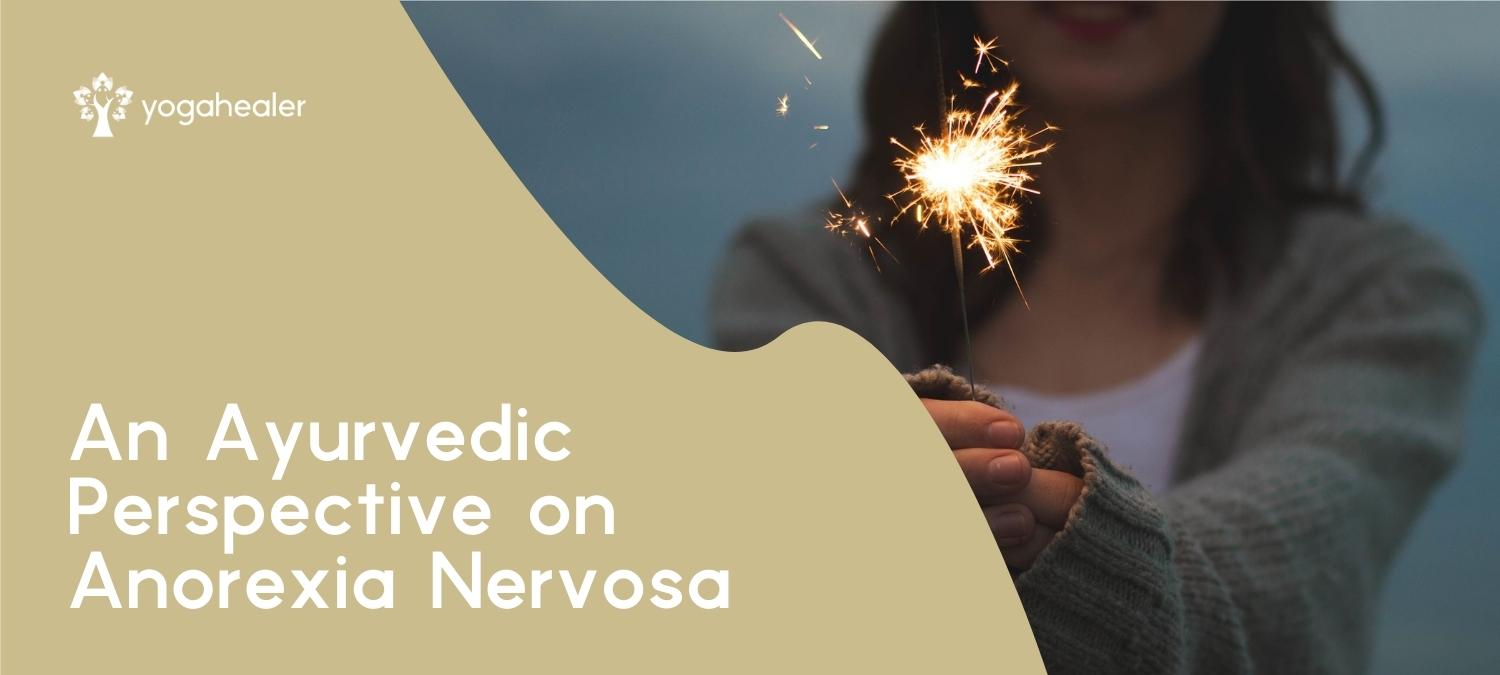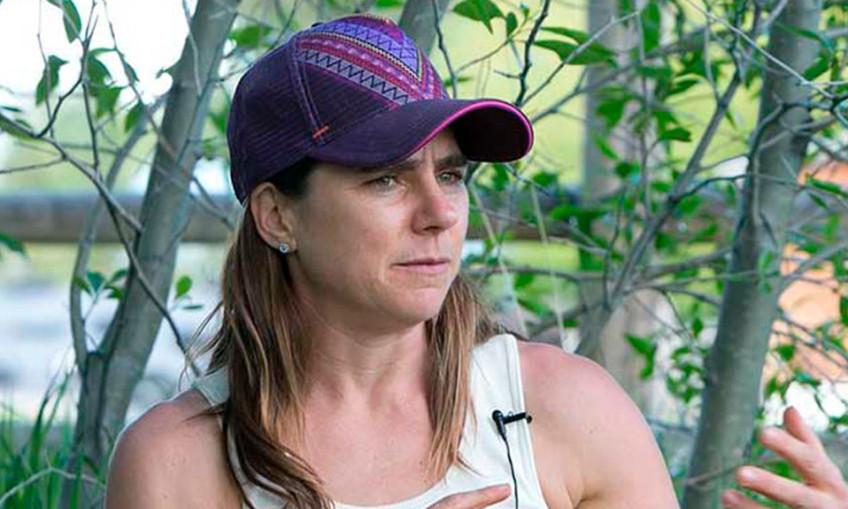Anorexia Nervosa, An Ayurvedic Perspective

I was recently staying with a friend of mine, who confided in me that his teenage daughter is struggling with Anorexia Nervosa. After going in and out of the hospital, receiving both psychiatric and nutritional care, and finally being sent home with laxatives, not much had changed in the state of her health.
My friend was feeling frustrated, worried and at a loss of where to turn next. Moved out of compassion for my friend’s genuine concern for his daughter and the pain that I knew she must be going through, I was inspired to dig a little deeper and take a look at how Ayurveda might approach the issue of this all-too-common health condition.
Looking at the Bigger Picture
It can often be quite daunting and overwhelming when a practitioner or health coach is confronted with a big scary disease name, such as Anorexia Nervosa. But what the studies of yoga and Ayurveda teach us, over time, is to zoom out and look at things from a broader lens.
Whereas western allopathic medicine tends to zoom in and address the specific problem or disease state, Ayurvedic medicine takes a step back and looks at the whole person as a unique individual with a unique constitution and set of life circumstances, all of which contribute to the state of their physical and mental health.
Over time, I have learned to ask the question, “Who is this person, and what is REALLY going on here?”
So when my friend shared his daughter’s story, I went into detective mode and started asking questions. Based on this desire to step back and discover the bigger picture of what is going on for her, I started with questions addressing the following themes:
- What is her constitution?
- What time of year does she typically go out of balance?
- What is her agni (digestive) type?
- What else is happening in her life that may be affecting her health?
- What is her health history, and are there any noteworthy patterns?
After asking many more detailed questions along these same lines, I learned that my friend’s daughter tends to go out of balance in the cold, windy autumn season, is currently dealing with the stress and transition of a teenager starting a new year of high school, and has had a pattern of irregular appetite and digestion throughout her life. In a nutshell, I concluded that this young woman is dealing with a very high degree of vata in her system, and a long-term pattern of vishama agni, or irregular digestion.
The Importance of Digestion
From an Ayurvedic perspective, all imbalance and disease starts in the digestive system, which includes the mouth, the anus, and everything that happens in between. So even though Anorexia Nervosa is a disease that affects the mind and nervous system, it is also majorly tied to one’s state of digestion.
With this condition there is a sense of mind over matter—a conscious choice to starve the body due to a distorted self-image and a desire to be thinner. If someone has strong digestion and a healthy appetite (more common with high pitta dosha), this choice takes a high degree of mental willpower and control to overcome the natural hunger signals of the body.
But for someone with more vata dosha and vishama type agni, it is common to have a very low appetite, as well as an excess of gas, bloating, constipation, and discomfort after meals. So for this kind of person, like my friend’s daughter, it is often just easier and more COMFORTABLE not to eat at all. Which leads to a vicious cycle.
When the body does not receive regular nutrition, it has difficulty maintaining regular rhythms of sleep and elimination. Which in turn adds to increased accumulation of vata, more irregular digestion, and more discomfort upon eating. So it makes perfect sense that the more this condition progresses, the more difficult it becomes to break the cycle, and the more uncomfortable it becomes to simply eat a meal.
Rediscovering the Spice of Life
After zooming out to look at the big picture of what was going on for my friend’s daughter, I came back to my practical, everyday Ayurvedic toolkit. My number one tool for bringing vishama agni back into balance is simple— spices!
Vishama agni is closely associated with vata dosha, and the best foods for vata are warm, moist, moderately oily, and generously spiced. These types of foods balance out the cold, dry, brittle qualities of vata. And the spices themselves act to reignite the digestive fire, leading to increased appetite, more comfortable digestion, and regular elimination.
So as we spoke, I found myself raiding my friend’s kitchen cabinets in search of fresh, agni-boosting spices that he could start adding to their diet. What I found were a few small bags of old, faded, musty smelling herbs and spices. A start, but not quite the kind of fresh, aromatic, energy-filled plant matter that makes you want to inhale more deeply and that makes your mouth begin to water.
So I gave my friend an assignment—to take his daughter to their local health food store and let her smell all the spices, choosing a few favorites to take home for making teas and cooking into their meals. This way, she would begin to get not only the digestive benefit of the spices but also an opportunity to reconnect to her inner sense of excitement and desire. Because an appetite for food is directly linked to an appetite for life. And what makes life worth living are the things that make it spicy, flavorful and exciting!
Simple Tea for Balancing Vata
This is a tea that I recommended for my friend’s daughter, but it is excellent for anyone with irregular, vata-type digestion. Almost all spices are great for vata, as long as they are not too hot or too dry. So play around, have fun, and trust the smells and flavors that call to you. But if you want to keep it simple, this blend of fennel and cardamom is one of my favorites.
Fennel is warm and gentle for the gut, while cardamom brings a sweet, warm energetic quality to the heart. Together these two herbs are a perfect pair to balance digestion and reignite a sense of excitement for life.
- 2 teaspoons fennel
- 1 teaspoon cardamom
Simmer gently in hot water and sip throughout the day or 20 minutes before each meal.
Anorexia Nervosa can feel like a big, scary, insurmountable disease. But from an Ayurvedic perspective it comes back to the same questions; “Who is this person, and what is going on in the bigger picture of their life?” When we start to see the patterns we can begin to understand them. And when we understand them, we can begin to find a sense of compassion and empathy, even for ourselves. This compassion, combined with a few simple tools and a remembrance of what makes life worth living, is a truly powerful place to begin.















Comments
No comments yet, be the first to comment